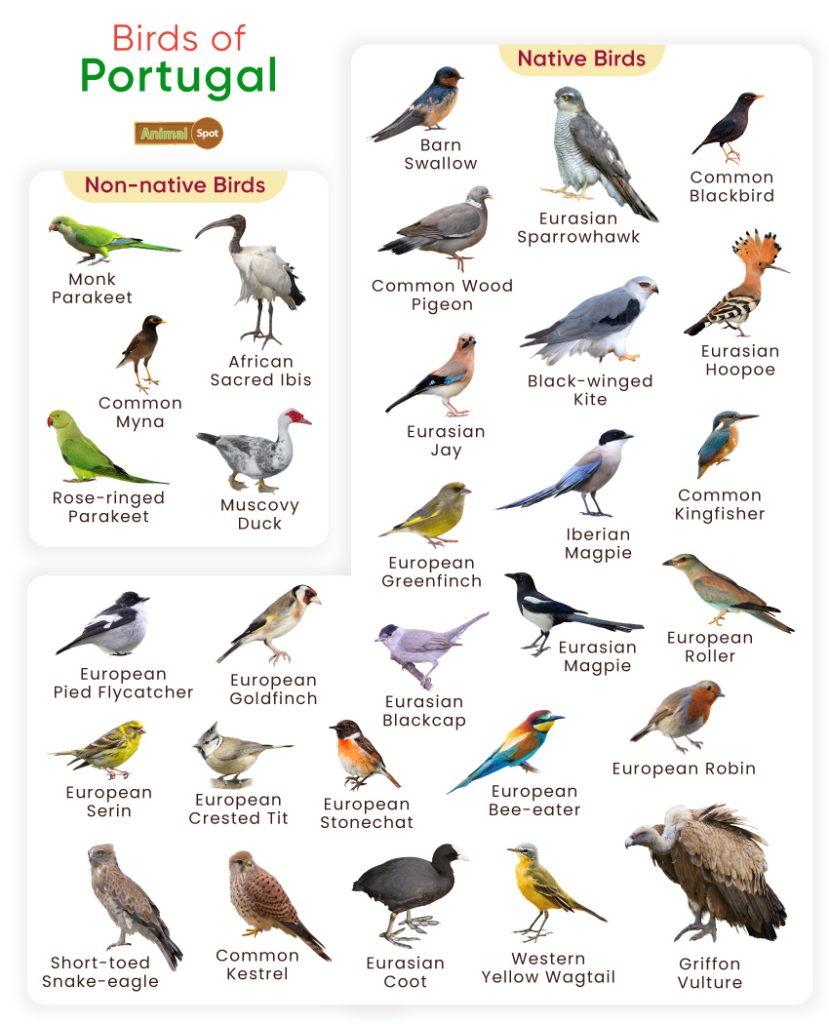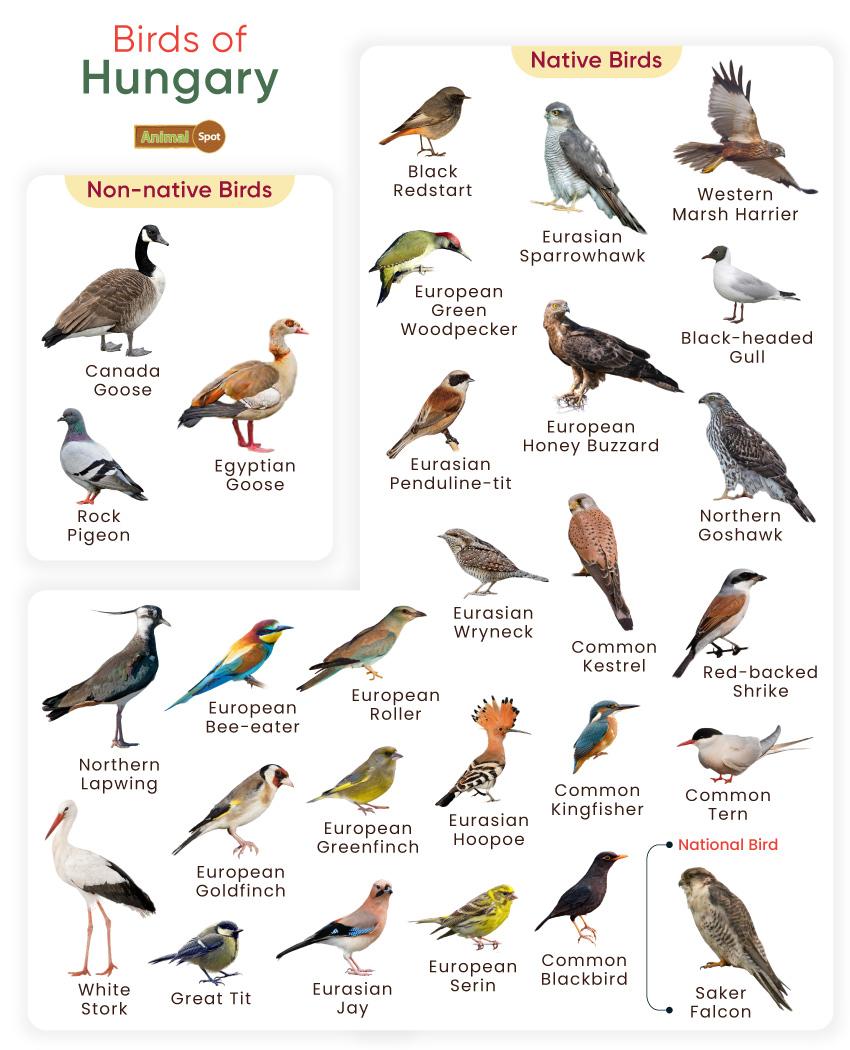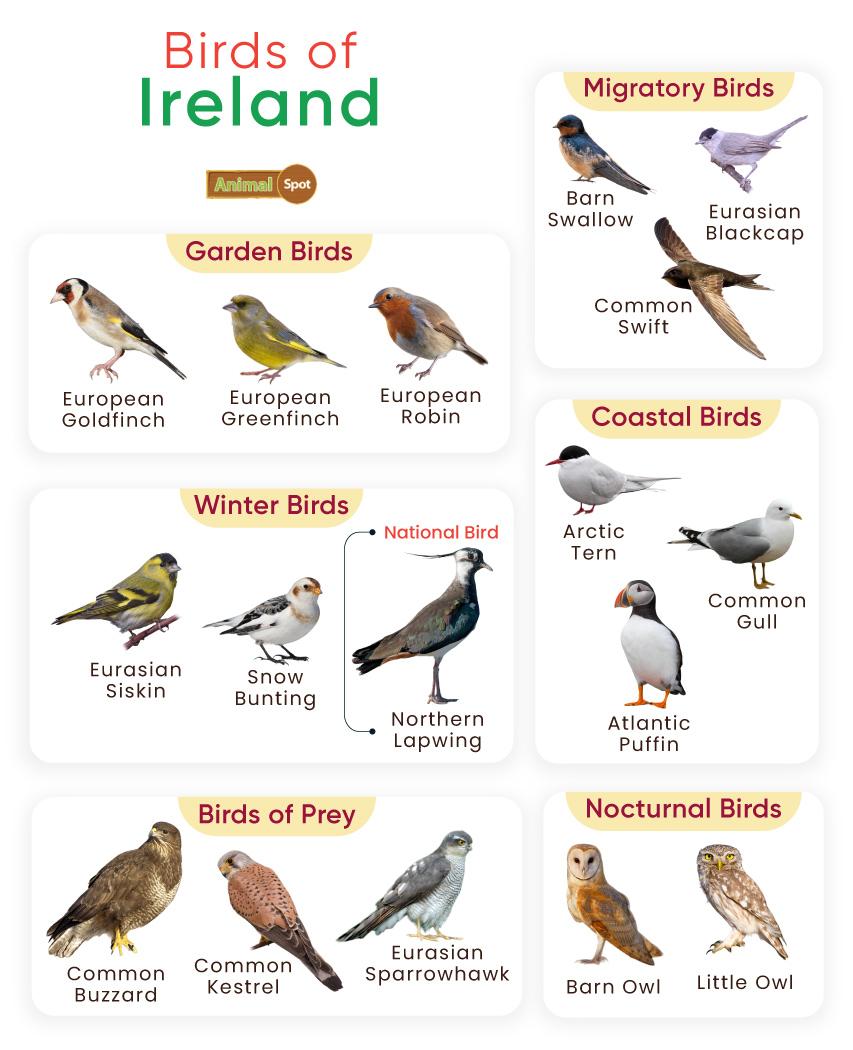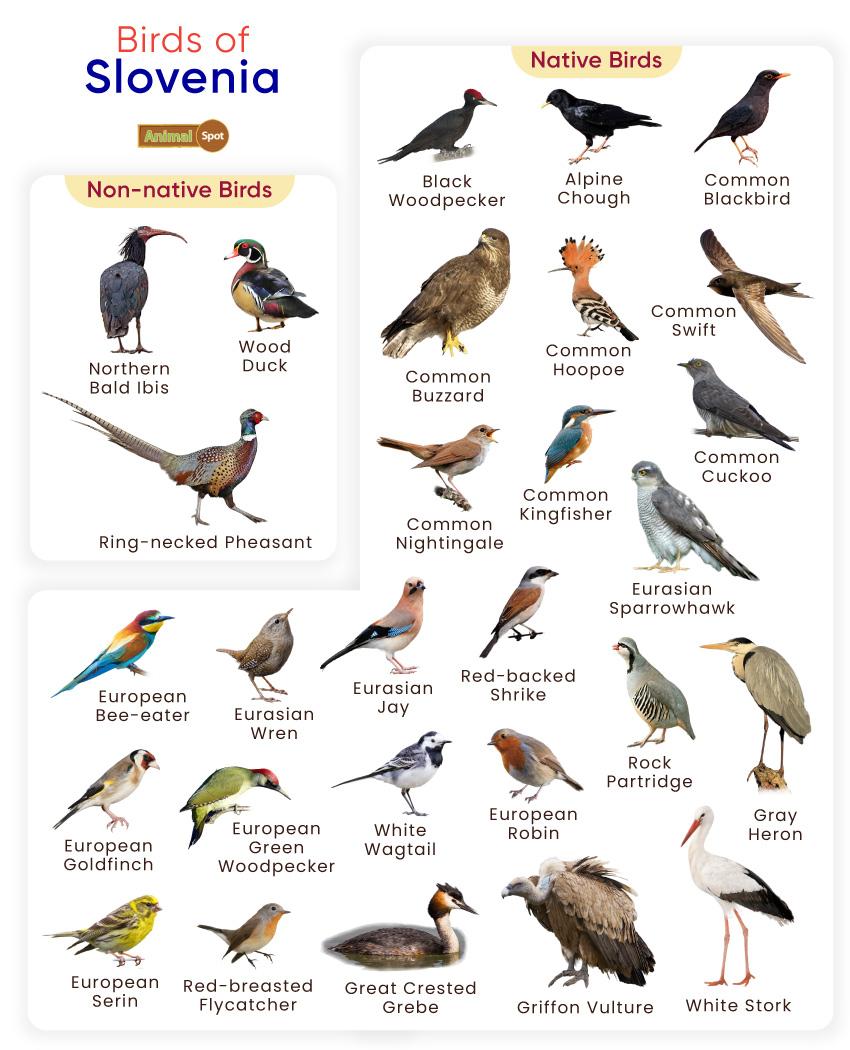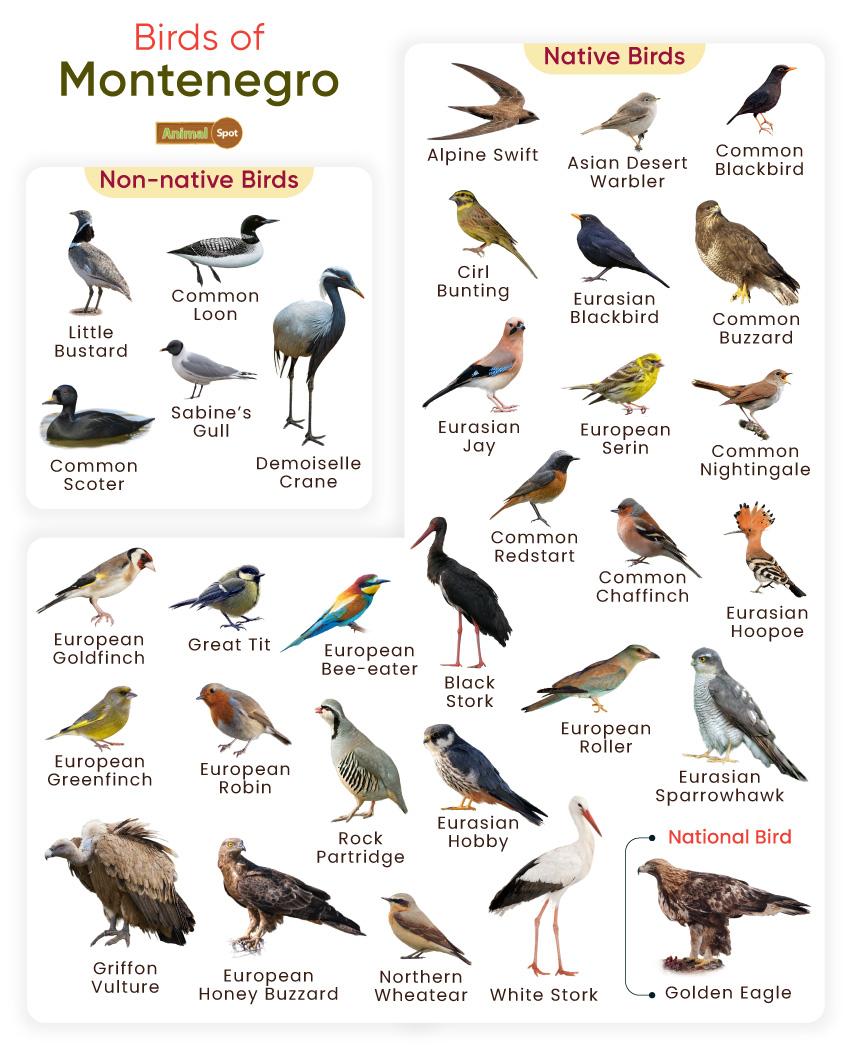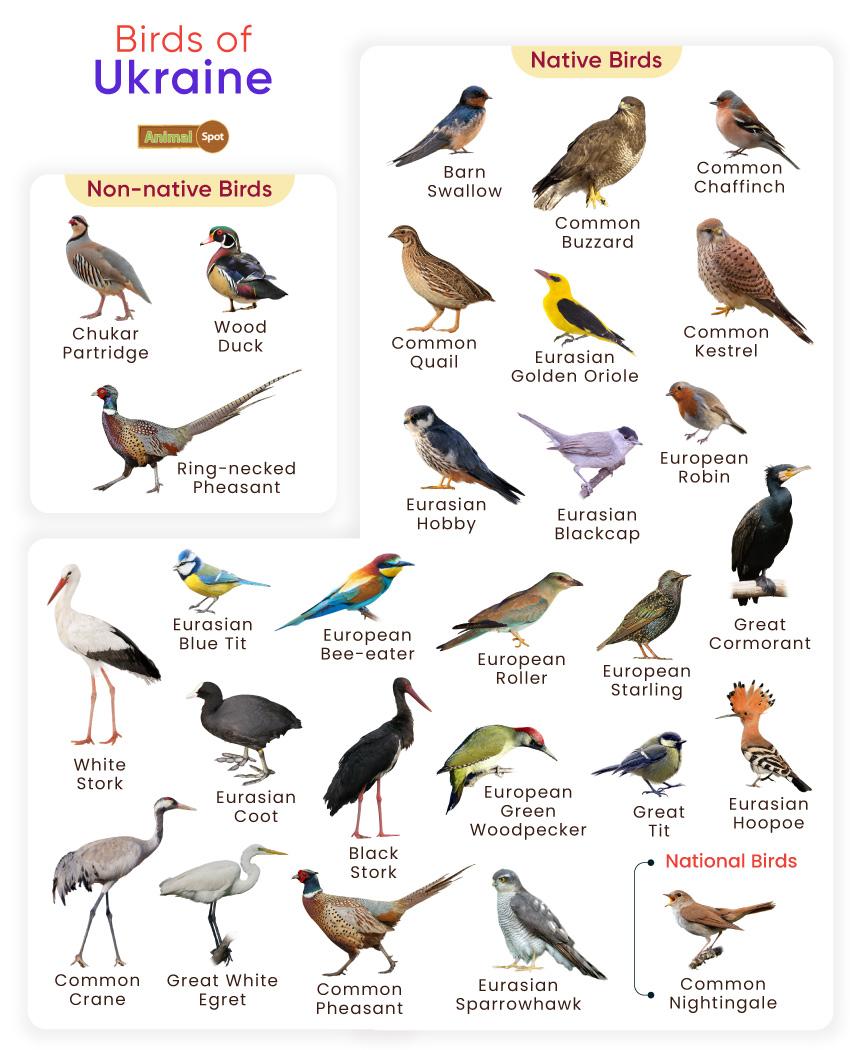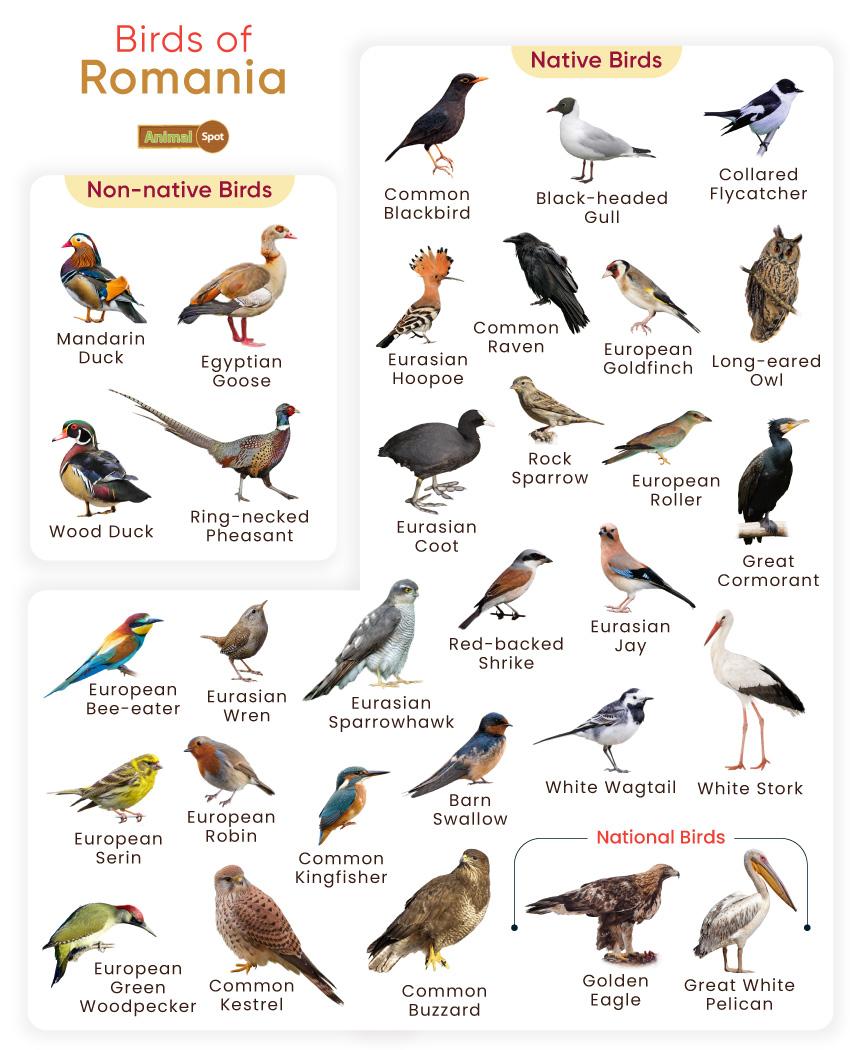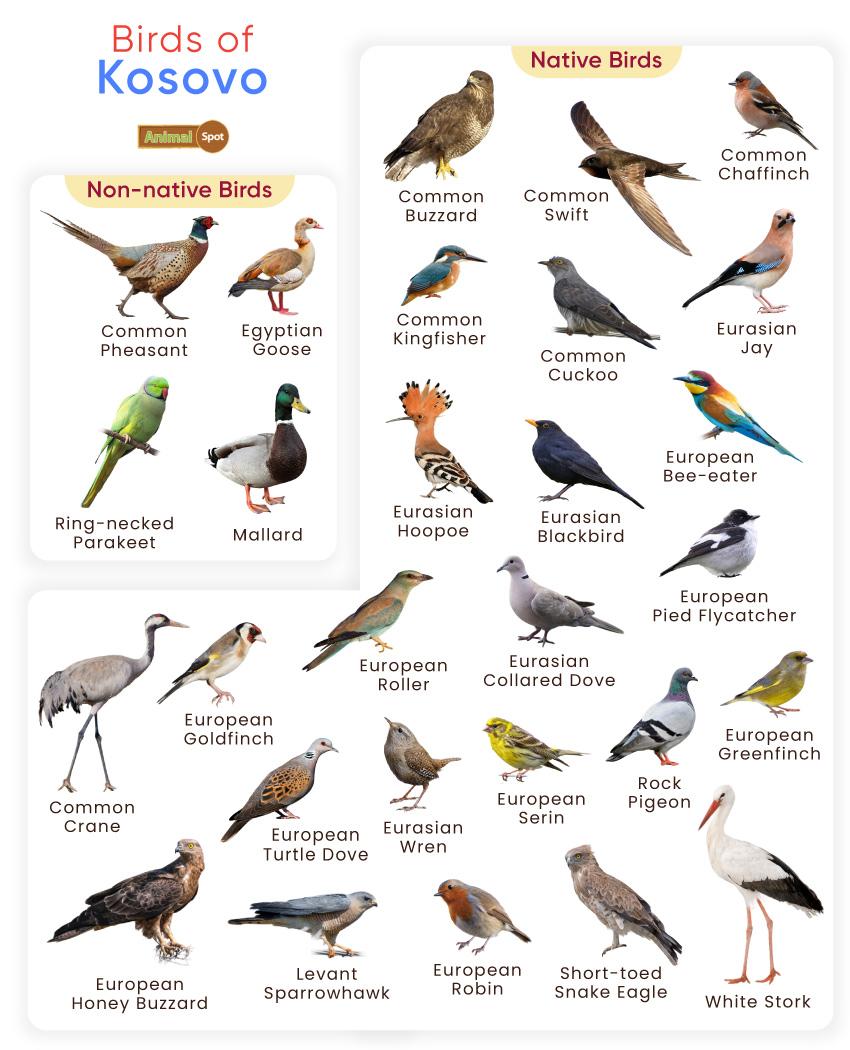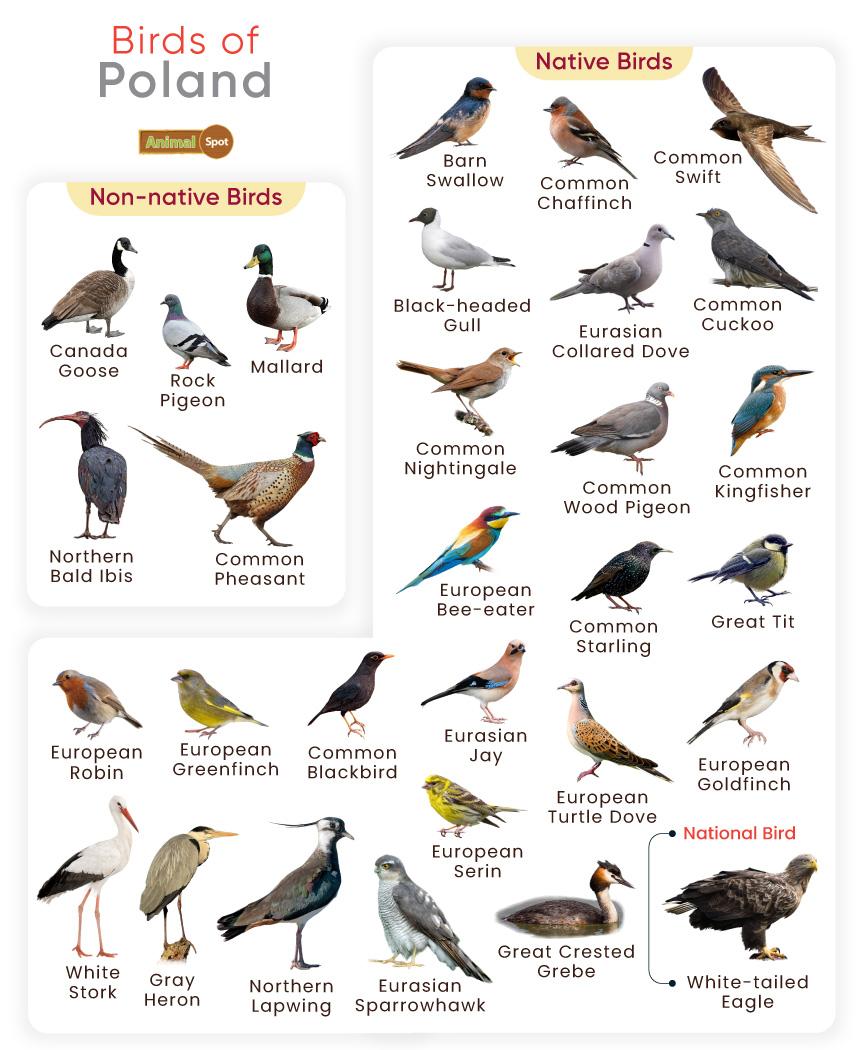About 700 species of birds live in Portugal. These avifauna live in the various forests of the country, including mixed woodlands, deciduous forests, and montane forests.
Some notable species found in Portugal include birds of prey like the Black-winged Kite, the Eurasian Sparrowhawk, and the Common Kestrel.
List of Common Birds Found in Portugal
Native Birds
- Audouin’s Gull
- Barn Owl
- Barn Swallow
- Black-headed Gull
- Black Kite
- Black Redstart
- Black Stork
- Black Tern
- Black-winged Kite
- Black-winged Stilt
- Blue Tit
- Booted Eagle
- Cirl Bunting
- Coal Tit
- Common Blackbird
- Common Buzzard
- Common Chaffinch
- Common Chiffchaff
- Common Cuckoo
- Common Kestrel
- Common Kingfisher
- Common Linnet
- Common Moorhen
- Common Pheasant
- Common Redstart
- Common Ringed Plover
- Common Sandpiper
- Common Shelduck
- Common Starling
- Common Swift
- Common Tern
- Common Waxbill
- Common Wood Pigeon
- Corn Bunting
- Crested Lark
- Crested Tit
- Dartford Warbler
- Dunlin
- Dunnock
- Egyptian Vulture
- Eurasian Blackcap
- Eurasian Blackcap
- Eurasian Blue Tit
- Eurasian Bullfinch
- Eurasian Collared Dove
- Eurasian Coot
- Eurasian Crag Martin
- Eurasian Curlew
- Eurasian Hobby
- Eurasian Jackdaw
- Eurasian Jay
- Eurasian Magpie
- Eurasian Nuthatch
- Eurasian Oystercatcher
- Eurasian Reed Warbler
- Eurasian Siskin
- Eurasian Sparrowhawk
- Eurasian Spoonbill
- Eurasian Tree Sparrow
- Eurasian Wigeon
- Eurasian Wren
- European Bee-eater
- European Crested Tit
- European Goldfinch
- European Greenfinch
- European Green Woodpecker
- European Honey Buzzard
- European Hoopoe
- European Nightjar
- European Pied Flycatcher
- European Robin
- European Roller
- European Serin
- European Shag
- European Starling
- European Stonechat
- European Stone Curlew
- European Turtle Dove
- Firecrest
- Golden Eagle
- Great Cormorant
- Great Egret
- Great Spotted Cuckoo
- Great Spotted Woodpecker
- Great Tit
- Great White Egret
- Griffon Vulture
- Hawfinch
- House Martin
- House Sparrow
- Iberian Magpie
- Kentish Plover
- Little Bittern
- Little Egret
- Little Grebe
- Little Owl
- Little Ringed Plover
- Little Tern
- Long-tailed Tit
- Mediterranean Gull
- Melodious Warbler
- Northern Gannet
- Northern Lapwing
- Northern Wheatear
- Ortolan Bunting
- Osprey
- Peregrine Falcon
- Red-billed Chough
- Red-legged Partridge
- Red-rumped Swallow
- Rock Bunting
- Ruff
- Sand Martin
- Sandwich Tern
- Sardinian Warbler
- Short-toed Eagle
- Short-toed Snake Eagle
- Spectacled Warbler
- Spotted Flycatcher
- Tawny Owl
- Western Bonelli’s Warbler
- Western Yellow Wagtail
- Whimbrel
- White Stork
- Willow Tit
- Yellowhammer
- Yellow-legged Gull
Non-native Birds
- African Sacred Ibis
- Black-headed Weaver
- Chestnut Munia
- Common Myna
- Common Waxbill
- Crested Myna
- Egyptian Goose
- Monk Parakeet
- Muscovy Duck
- Northern Bald Ibis
- Red Avadavat
- Ring-necked Pheasant
- Rose-ringed Parakeet
- Scaly-breasted Munia
- Yellow-crowned Bishop
Some of the best birding sites in Portugal include Ria Formosa Natural Park, Tagus Estuary Natural Reserve, and Castro Verde Special Protection Area. The peak season for birdwatching in Portugal typically falls in spring and autumn.
Madeira is a great place to go birding as it is home to the endemic Trocaz Pigeon and Madeira Firecrest. Towards the north of Portugal, one is likely to catch a glimpse of a bird of prey like the Montagu’s Harrier or the Short-toed Snake Eagle, while down south, in places like Algarve, sea and coastal birds become more visible.

